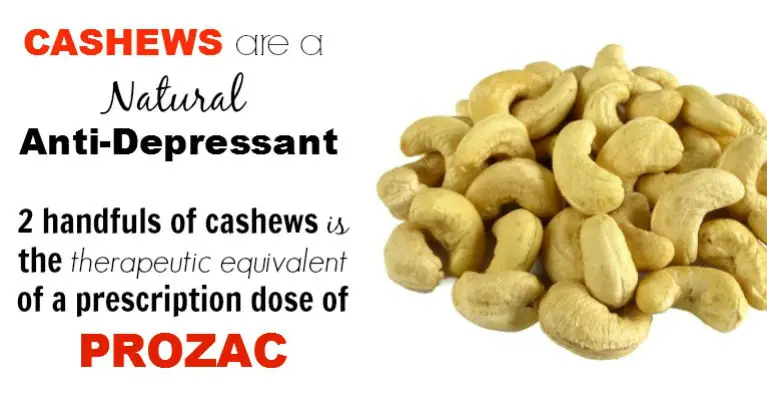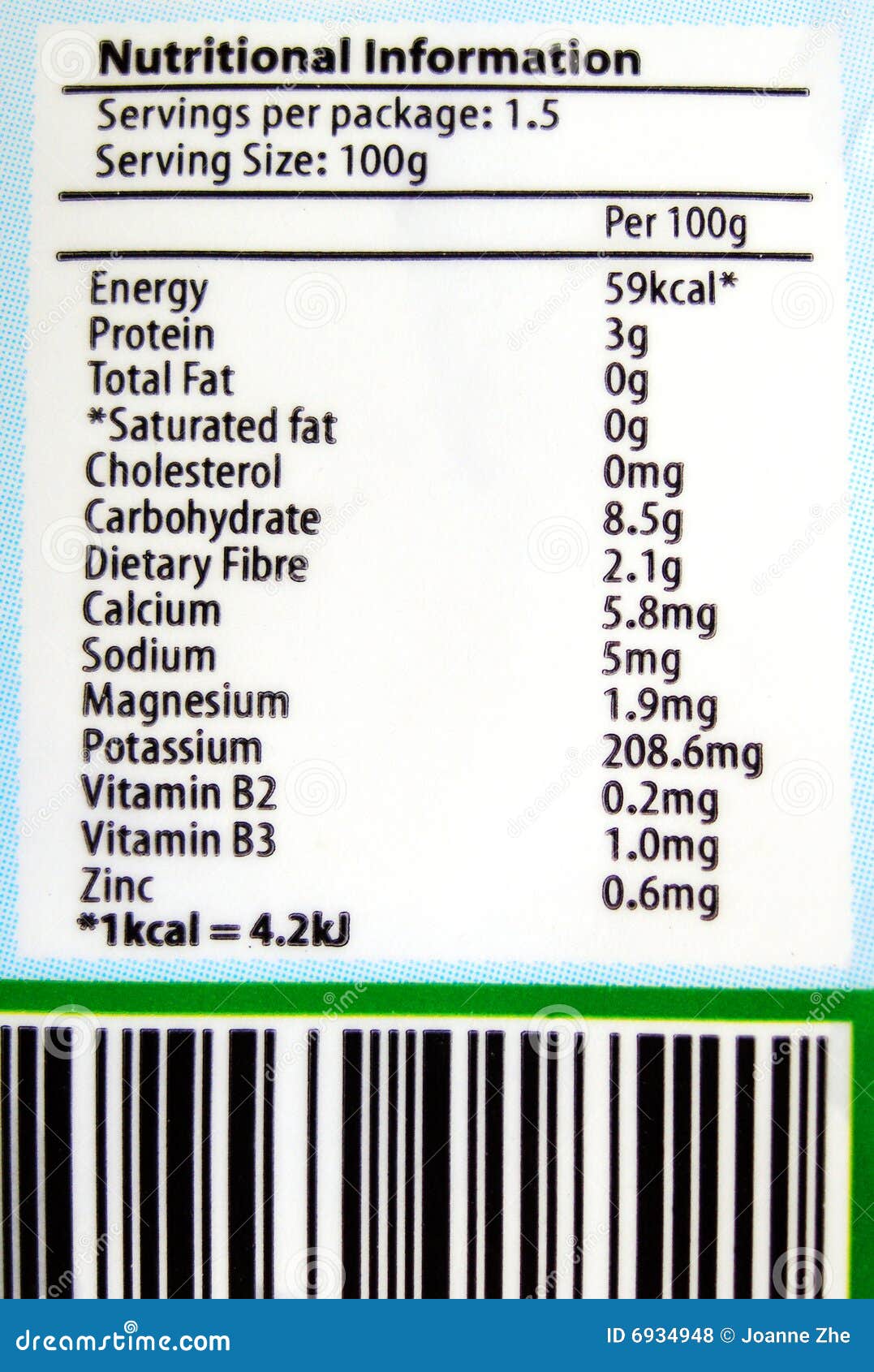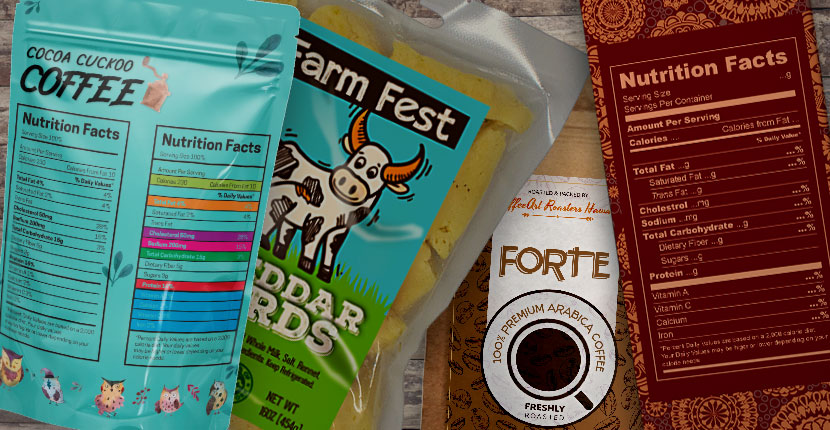41 vitamins and minerals on food labels
Nutrition Facts Labeling — FDA Reader Macronutrients & Minerals (In order) Calcium Iron Phosphorus Iodine Magnesium Zinc Selenium Copper Manganese Chromium Molybdenum Chloride Potassium Vitamins and minerals must appear in the label if: They appear in a serving of the product When they are added as a nutrient supplement When a claim is made about them Vitamins and minerals added to food The Australia and New Zealand Ministerial Forum on Food Regulation has agreed that food manufacturers can add vitamins and minerals to food in response to an actual or potential population health need. This is outlined in the Fortification of Food with Vitamins and Minerals Policy Guideline. Mandatory fortification
Displaying vitamins and minerals on your product labels - Xyris In the Show Components box select " all nutrients available in FoodWorks " from the dropdown box. Select the additional nutrients that you want to show. In this example, we are selecting calcium and iron. Click OK. Now, when you open the recipe's Label window, these nutrients are ready for you to select in the NIP tab.

Vitamins and minerals on food labels
Food labeling: MedlinePlus Medical Encyclopedia VITAMINS AND MINERALS Vitamin D, calcium, iron, and potassium are the only micronutrients required to be on the food label. Food companies can voluntarily list other vitamins and minerals in the food. PERCENT DAILY VALUE (% Daily Value) Many nutrients include a percent daily value (%DV). Nutrition Labels 101: What's Required? What's Optional? Vitamin D, Potassium, and the minerals, calcium and iron, will now state exact amounts along with their daily value percentage. Vitamins A and C will no longer be required on the FDA's Nutrition Facts labels (though manufacturers may still include them if they choose), while Vitamin D and Potassium will now be required. ... The updated ... Understanding Food Labels | The Nutrition Source | Harvard T.H. Chan ... Removal of vitamins A and C, and addition of vitamin D and potassium. Vitamins A and C had been included in previous labels when deficiencies of these nutrients were more common. They are rare today, so have been replaced with vitamin D and potassium, which can run low in the diets of some Americans. How do I use the % Daily Value?
Vitamins and minerals on food labels. Where are the vitamins and minerals on a nutrition labels? The Nutrition Facts label may include the following 14 minerals: Calcium, chloride, chromium, copper, iodine, iron, magnesium, manganese, molybdenum, phosphorus, potassium, selenium, sodium, and zinc are some of the minerals found in the human body. On a nutrition label, how are ingredients listed? New Food Label Spotlight: Vitamins and Minerals In the updated label, that same section will jettison vitamin A and vitamin C (the FDA asserts, "In the early 1990's, American diets lacked Vitamins A and C, but now Vitamins A and C deficiencies in the general population are rare"), replacing them with vitamin D and potassium. Calcium and iron will remain on the label. Vitamins and minerals - British Nutrition Foundation The reference intake (RI) for vitamins and minerals are used for food labelling can be found on the back of pack for some products. RIs are for adults and show the amount most of us need per day of each vitamin and mineral for good health. Some RI values are given in milligrams (mg), while others are in micrograms (µg). Dietary Supplement Labeling Guide: Chapter IV. Nutrition Labeling This results in the following order for vitamins and minerals: Vitamin A, vitamin C, vitamin D, vitamin E, vitamin K, thiamin, riboflavin, niacin, vitamin B6, folate, vitamin B12, biotin,...
Interactive Nutrition Facts Label - Food and Drug Administration What's On The Label Ingredient List Glossary Resources Fact Sheets Vitamins and Minerals Nutrition Facts 4 servings per container Serving size 1 1/2 cup (208g) Amount Per Serving 240 Calories %... Vitamins and Minerals | Nutrition.gov Vitamins and Minerals Get the facts on vitamins and minerals, from A to Z. Food Sources of Calcium USDA, HHS View a list of common foods and drinks and the amount of calcium in a standard portion. Food Sources of Iron USDA, HHS View a list of common foods and drinks and the amount of iron in a standard portion. Food Sources of Potassium USDA, HHS Why the Nutrition Facts Label Can Lead You Astray On a side note, Nutrition Facts labels aren't required to list any vitamins and minerals except vitamin A, vitamin C, calcium, iron, and sodium. Why not the others? Because the FDA did not consider them vital for Americans. There are many arguments on how that is not in agreement with current scientific evidence. But there's hope on the horizon. Food Labels | CDC Apr 23, 2021 · In general, eat more foods that are higher in vitamins, minerals (such as calcium and iron), and fiber. Eat fewer foods that are higher in added sugars, saturated fat external icon, and sodium external icon (salt), and avoid trans fat external icon. Keep in mind that the % Daily Value of each nutrient, such as total fat of 10% in the example below, is based on eating 2,000 calories a day.
How to calculate percents of vitamins and minerals on nutrition labels? In the Nutrition Facts label, which vitamins and minerals are listed? Biotin, choline, folate, niacin, pantothenic acid, riboflavin, thiamin, and vitamins A, b6, b12, c, d, e, and K are among the 14 vitamins that may be stated on the Nutrition Facts label. Minerals are inorganic substances present in soil and water naturally. Daily Value on the New Nutrition and Supplement Facts Labels Which Nutrients Are Required to Be Listed on the Nutrition and Supplement Facts Labels? The Nutrition Facts label must list total fat, saturated fat, trans fat, cholesterol, sodium, total... Food Labels | Nutrition.gov Folate and Folic Acid on the Nutrition and Supplement Facts Labels HHS, Food and Drug Administration, Center for Food Safety and Applied Nutrition Learn what common foods are natural sources of the vitamin folate, plus what foods may have folic acid added during processing. Interactive Nutrition Facts Label HHS, Food and Drug Administration How to Read Supplement Labels Like a Pro - Healthline Regulations on supplements Dietary supplements are products that are intended to supplement your diet. They're available in a variety of forms, including tablet, capsule, liquid, pill, and powder....
Optional Nutrients On The Food Label - LabelCalc Dietary fiber. Sugars. Protein. Vitamin A. Vitamin C. Calcium. Iron. These nutrients are mandatory because the FDA considers them the most essential to either limit our intake of (in the case of cholesterol, sodium, and trans fat) or increase our intake of them (in the case of iron, Vitamin C, and dietary fiber).
What is required to be put on food labels? | AnswersDrive Only 2 vitamins (A and C) and 2 minerals (calcium and iron) are required on the food label. But, when vitamins or minerals are added to the food, or when a vitamin or mineral claim is made, those nutrients must be listed on the nutrition label.
Vitamin, mineral daily requirements and good food sources - Harvard Health RDAs, food sources for selected vitamins and minerals October 1, 2013. Recommended Dietary Allowances (RDAs) for selected nutrients commonly displayed on food labels. Micronutrient: Vitamin A (mcg*/day) Vitamin C (mg**/day) Potassium (mg**/day) Calcium (mg**/day) Iron (mg**/day) For women >51 years: 700. 75. 4,700. 1,000-1,200. 8. For men >51 ...
Understanding Nutrition Facts on Food Labels - WebMD After fats, carbohydrates, dietary fiber, sugars, and protein are listed on the food label. These items are followed by specific nutrients in the food, such as vitamin A, vitamin C, calcium, and...
PDF Nutrition Facts Labels - University of Utah They're an important source of vitamins and minerals and are typically high in dietary fiber. − Limit refined grains, especially in products high in calories, saturated fat, added sugars, and/or ... • Check the ingredient list on nutrition labels. Added sugar comes in the form of syrup (corn, high-fructose corn, malt, maple, and pancake),
Reading and Understanding Food Labels and Nutrition Info - Beaumont Health Vitamins and minerals Two vitamins and two minerals will be listed at the bottom of the label under protein. The percentages next to these indicate what percent of the daily value for these nutrients is found in these foods. These crackers, for example, are not a good source of vitamin A or C, but they do contribute a tiny bit of calcium.
Nutrition: How to Read a Nutrition Facts Label - familydoctor.org Men 50 years of age or younger should get at least 38 grams of fiber per day. Women 50 years of age or younger should get at least 25 grams of fiber per day. Fiber is found in fruits, vegetables, and whole grains. Look for the words "whole grain" on the package and ingredient list. Vitamins and minerals.
Here's how to read a nutrition label so you can make the best choices Step 3: Look at the calories and nutrients. There are six classes of nutrients. These include fats, carbohydrates, proteins, vitamins, minerals and water. All of these nutrients are classified as ...






Post a Comment for "41 vitamins and minerals on food labels"